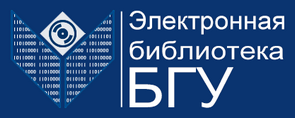Пожалуйста, используйте этот идентификатор, чтобы цитировать или ссылаться на этот документ:
https://elib.bsu.by/handle/123456789/29979Полная запись метаданных
| Поле DC | Значение | Язык |
|---|---|---|
| dc.contributor.author | Кирвель, Ольга Чеславовна | - |
| dc.date.accessioned | 2013-01-23T09:22:38Z | - |
| dc.date.available | 2013-01-23T09:22:38Z | - |
| dc.date.issued | 2000 | - |
| dc.identifier.citation | Белорусский журнал международного права и международных отношений. — 2000. — № 2 | ru |
| dc.identifier.uri | http://elib.bsu.by/handle/123456789/29979 | - |
| dc.description | Раздел - "Международные отношения" | ru |
| dc.description.abstract | The article is devoted to the study of the changes in the real exchange rate (RER) during the reformation of economic systems. The author substantiates the claim that the RER category emerged as a result of extending the purchasing power parity theory (PPPT) and received wide acceptance in modern western theories of the exchange rate. The author states that only the PPPT and consequently, the RER may serve as an estimation of competitiveness of the country only if the adjustment correction to the productivity margin is made. The article studies the phenomenon of the RER increase during the transition from an administrative system to market relations on the example of such countries of Eastern Europe as the Czech Republic, Hungary, Poland, Slovakia within the period from 1989 to 1996. The economic literature lacks definite explanation and evaluation of such changes ofthe RER during the first stage of transformation. From the PPPT point of view, the RER increase, for example, by 10 % and 20 % per year can be treated as a threat to the economy competitiveness. On the contrary, the alternative approach states that the real increase of the exchange rate after the initial overproportional devaluation corresponds to the equilibrium dynamics at the first stage of transformation. There have been efforts undertaken to give theoretical grounds to this non-traditional hypothesis. Despite the absence of the exchange rate theory in the transition period, the author makes a conclusion that in this case the main reason of equilibrium increase lies in the increase of economy effectiveness owing to the market price control and distribution of resources. The article studies the process ofthe existing RER dynamics in the countries of Eastern Europe and points out the reasons for rapid initial devaluation and the gradual RER increase during the next years. The empirical check of the equilibrium RER increase proves its applicability only in the countries that have already realized the full complex of economic reforms. On the basis of the given approach the author outlines important recommendations for the economic policy in the countries with economies in transition. The comparison the of sources of the RER dynamics in the countries of Eastern Europe and the Republic of Belarus is an indicator of fundamental differences ofthe given transition economies both in the degree of realization of the full complex of reforms and in the adaptation of the real sector of economy to the market conditions. | ru |
| dc.language.iso | ru | ru |
| dc.subject | ЭБ БГУ::ОБЩЕСТВЕННЫЕ НАУКИ::Экономика и экономические науки | ru |
| dc.title | Проблема динамики реального валютного курса на пути перехода к рынку | ru |
| dc.title.alternative | The Issue of Dynamics of Exchange Rate During the Transition to the Market (Olga Kirvel) | ru |
| Располагается в коллекциях: | Белорусский журнал международного права и международных отношений. — 2000. — № 2 | |
Полный текст документа:
| Файл | Описание | Размер | Формат | |
|---|---|---|---|---|
| 2000_2_JILIR_kirvell_r.pdf | 562,31 kB | Adobe PDF | Открыть |
Все документы в Электронной библиотеке защищены авторским правом, все права сохранены.

